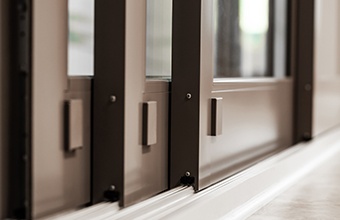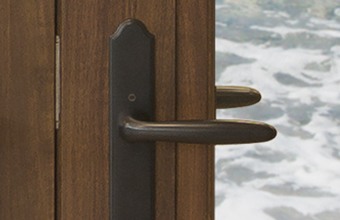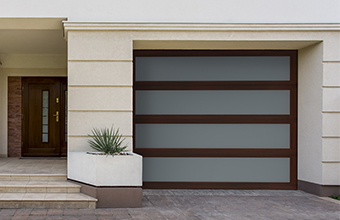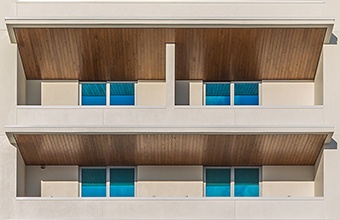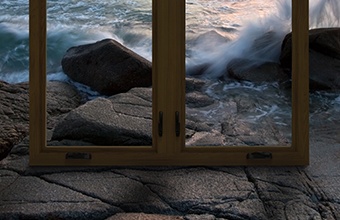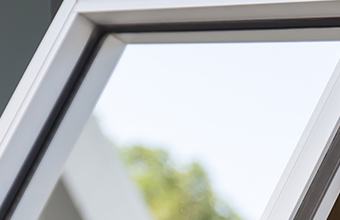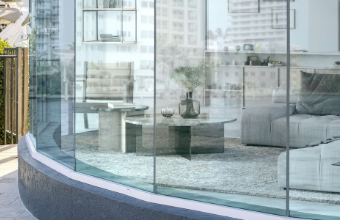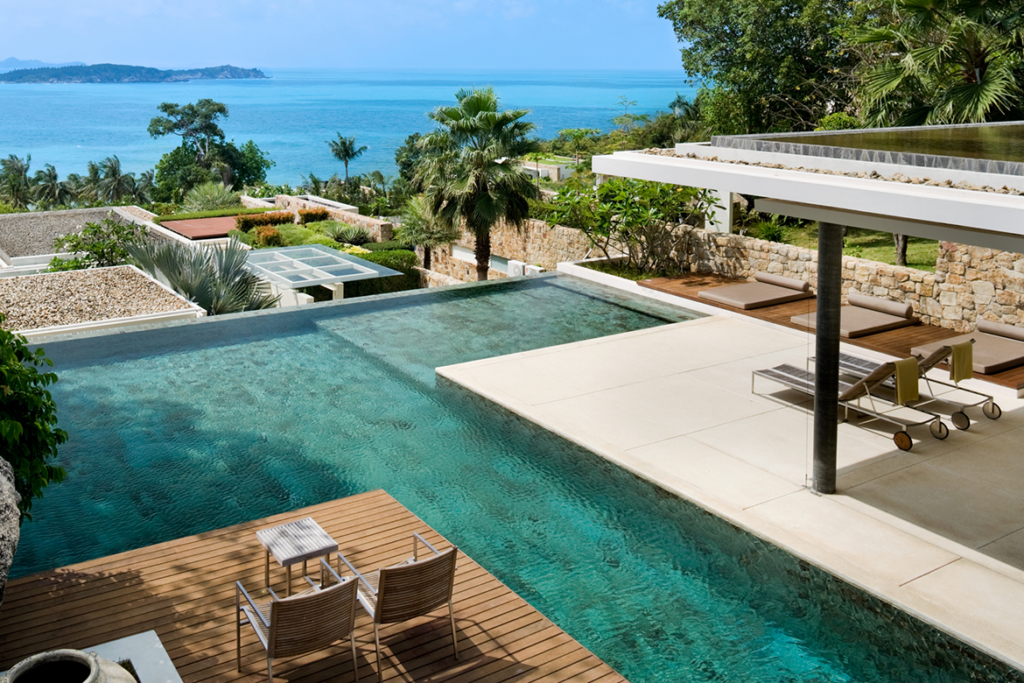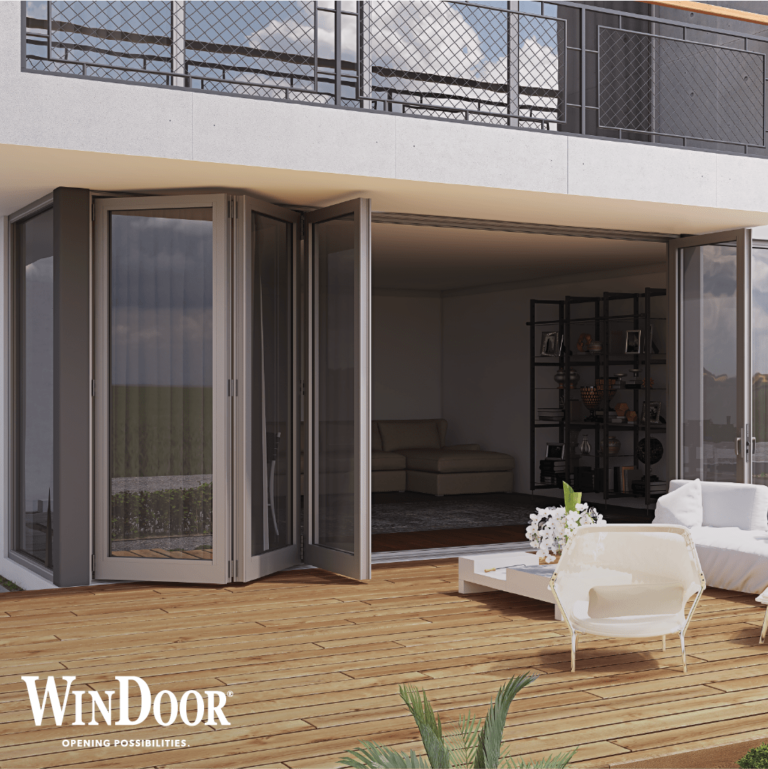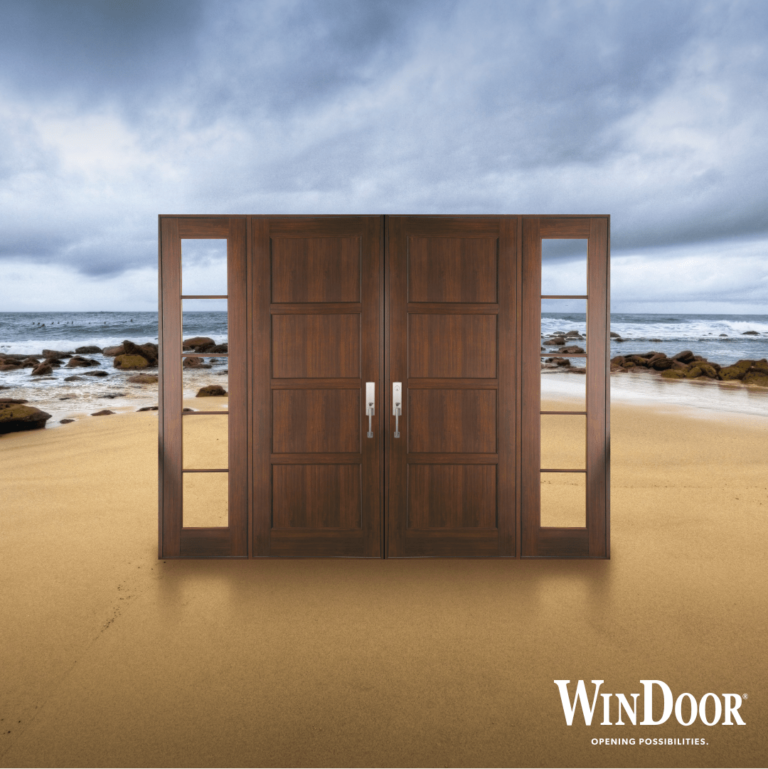Flora is the heart of a well-designed landscape. It takes the right flowers, plants, and shrubs to create a breathtaking landscape design. From plant choice to placement, there’s much to think about when you’re designing outdoor space. With the right plant life, placed in the right positions, and given the right care, you can truly create an outdoor masterpiece.
Related: Inside DSDG Architects with Principal Mark Sultana
Create Balance

Balance is an important feature in home landscaping, and it’s achieved in many ways. You can create balance through a mixture of colors and textures, plant heights and shapes, symmetry, and asymmetry.
- Plan your color scheme. Whether you’re matching the color of your plants to your home, or you’re creating a breakout burst of color disconnected from your residential structure, plan your color scheme ahead of time. Cluster like colors together, or scatter color throughout your landscape, but whatever you choose, do it intentionally. Purposeful color schemes make a bigger impression than color schemes that are achieved at random.
- Isolate tall plants from short plants. Tall plants block short plants, which can create a sense of imbalance. Place tall plants near the back of your landscape, or to one side away from shorter plants. Let the shorter plants take up more space horizontally, as your tall plants take up more space vertically.
- Put plants with similar textures together. Avoid combining plants with disparate textures, like cacti with tropical flowers. Combining textures in this way creates distracting dissonance. Instead, combine like textures that flow from one side of the garden to the other.
- Choose: symmetrical or asymmetrical? Symmetry creates a feeling of stability and harmony, while asymmetry is unpredictable, visually interesting, and compelling. You can choose the style that’s right for your home’s landscape.
Understand the Needs of Your Plants
Avoid the temptation to choose a plant based on its beauty alone. Choose plants that fit the space you have. Identify how big the plant will grow, how much light it needs, how much water, and what kind of soil. Purchase plants that will thrive in your landscape—or make your landscape more suitable for the type of plants you’d like to grow. Filling your landscape with unsuitable plants will lead to wasted money and time.
Leave Your Views Open and Visible
Stand in your yard. Look around. Where are your eyes drawn? What is the focal point of your outdoor space? This is your “view”—and you should never cover it with plant life. Leave your view open and easy to see, whether that’s a view of the ocean, a view of a nearby golf course, or a view of the nearby cityscape. Frame your view with landscaping like large tropical plants, easy to grow ground cover, and attractive rocks or hardscaping. Never obscure your views: place the plant life to the side.
Grow a Healthy Garden With Suitable Plants

The best plants to grow on your property are the plants that are native to your area. In Florida, native flora includes a variety of lovely plants, shrubs, grasses, and trees like wispy Muhly grass, and charming redbud trees.
Growing native plants makes caring for your garden easier overall. Native plants are better suited for the conditions in Florida than many non-native plants.
If you live near the coast, remember that salt can penetrate everywhere—including our soil. If your soil is salty, look for plants that have a high tolerance for salt. Not sure if your soil has a high salt content? Have it tested. Plants that grow well in salty conditions include oleander, salt spray rose, and wax myrtle.
Add Strategic Shade
Flora can serve utilitarian purposes as well as decorative purposes. One of the most important functions of plants and trees in the landscape is the creation of shade. As you stand on your property, identify those parts of your yard where you’d like to spend time, then plant shrubs or trees that will provide shade in those areas on bright, sunny days.
Related: Inspiring Design to Create Outdoor Shade Anywhere
Create a Privacy Wall
You don’t have to put up a privacy fence to enjoy privacy. Create a privacy wall with plants like arborvitae, azaleas, or bamboo. When choosing plants for a privacy wall, become familiar with the growing habit of the plant. Will it need regular pruning? How tall does it grow? Know what you’re getting into when you’re planting shrubs for a privacy wall to ensure that the wall you create will meet your needs.
Use Flora to Hide Undesirable Elements
Flora adds beauty to spaces that you may not want to draw attention to otherwise. Canna lilies, for example, are tall, tropical flowers that can grow to be over six feet tall. They’re perfect for hiding undesirable elements of your landscape such as:
- Pool pumps
- Lawn tools
- Trash cans
What parts of your yard would you prefer not to look at anymore? Cover them with lovely tropical plants.
Replace Yard Space With Natural Elements
Grassy yard space requires expensive upkeep including regular fertilizing, mowing, and weeding. Consider replacing portions of your yard with natural elements like tropical plants, beautiful rocks, palms, and more.
Related: 3 Products that Make the Most of Waterfront Views
Hire a Professional
Some landscaping professionals go to school for years before they design beautiful landscapes. Most homeowners are not fully capable of designing their own landscape without help from a professional. The best way to ensure that your home looks its best is to hire a home landscaping professional who can help with the design and implementation of your home’s landscaping.
When you’re hiring a pro, approach it like you would any other home improvement project. Check their references. Look at their portfolio. Contact them for a consultation. Shop around when hiring a landscape designer, as different designers will have different strengths and opinions about what you should do with your landscaping. Finding the right professional will make it easy to ensure that the landscape design you finally select will be the right design for your home.

